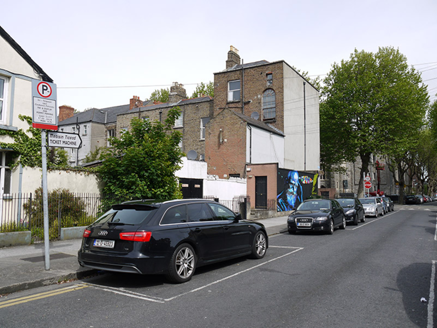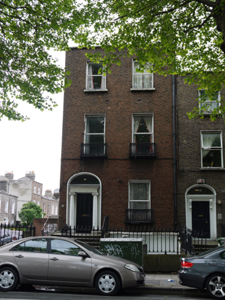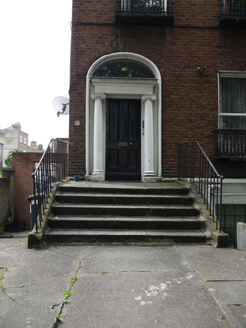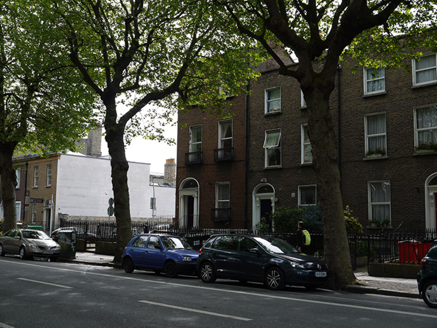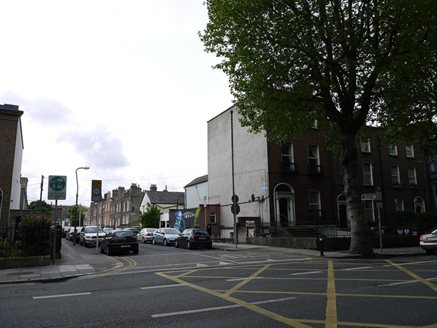Survey Data
Reg No
50110217
Rating
Regional
Categories of Special Interest
Architectural, Artistic
Original Use
House
In Use As
Apartment/flat (converted)
Date
1850 - 1870
Coordinates
315495, 232716
Date Recorded
21/05/2017
Date Updated
--/--/--
Description
End-of-terrace two-bay three-storey former house over raised basement, built c. 1860, having three-storey return to rear (south) elevation. Now in use as apartments. M-profile pitched roof hidden behind parapet with cut granite coping to front. Brown brick chimneystacks having clay pots. Red brick, laid in Flemish bond, to wall to front. Cut granite plinth course over rendered wall to basement. Brown brick, laid in English garden wall bond to rear. Rendered wall to east. Square-headed window openings with granite sills, raised render reveals and replacement windows to front. Cast-iron balconettes to ground and first floor windows. Round-headed window to rear. Elliptical-headed door opening having moulded render surround, Ionic doorcase with cornice, plain fanlight, timber panelled door. Granite steps and platform flanked by cast-iron railings with wrought-iron handrail. Yard to front enclosed by cast-iron railings on granite plinth wall, matching gate.
Appraisal
This house retains much of its early form and character. Well-proportioned openings and cut granite detailing articulate the façade. The Ionic doorcase displays skilled craftsmanship and adds visual interest to the facade. The front garden boundaries remain intact contributing to its early suburban character. It shares some characteristics with the adjoining houses resulting in a coherent streetscape. Casey (2005) notes that Portobello 'began to develop with the opening of the canal harbour in 1801. Streets between the South Circular Road and the canal [including] Harrington Street…have single-and double-fronted houses of Late Georgian character'. Harrington Street was predominantly developed after 1850.
